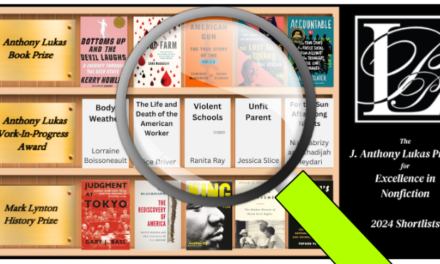| Among the worst: teacher-centrism, ’emotionalism,’ and over-use of outlier anecdotes
By Alexander Russo It was a rough, uneven year for many schools and families — and for education journalism, too. Some outlets and teams got back into schools and classrooms and refocused on how school systems are serving students, but many did not. And for all sorts of reasons, a handful of exquisitely unhelpful habits seemed to take hold. Among the most pronounced: teacher-centric coverage, an over-focus on emotions and worst-case scenarios, a tendency towards speculation, and the over-amplification of dramatic but atypical anecdotes. I believe deeply in the importance of education journalism and I am lucky enough to get to read education stories all day, every day. There are so many amazing people in this community and a lot of great coverage being produced. But it’s also sad and frustrating to see these bad habits take hold. They often result in misleading, conflict-centered, and reality-skewing coverage. I sometimes worry that education coverage is hindering public understanding of schools rather than helping it. However, the summer is a great time for everyone to reflect, regroup, and try out new things. There’s a certain urgency to the coming weeks, given that the upcoming school year is shaping up to be a doozy. Everyone’s going to have to be at their best. I sometimes worry that education coverage is hindering public understanding of schools rather than helping it.Herewith, education journalism’s five worst habits from where I sit — and some ideas for breaking out of them: BAD HABIT #1: TEACHER-CENTRIC COVERAGE More and more, education journalists tend to put one group of individuals — teachers — at the center of their stories. Teachers’ interests, experiences, and challenges are regularly and thoroughly explored by education teams and outlets. Some of you (or your editors) are clearly obsessed! No doubt, teachers are an incredibly important part of education. And I’m sure that they are avid readers of stories about their experiences. However, the number of stories I see focused on their experiences far outnumber those focused on the experiences and outcomes for students and communities that are the whole reason schools exist. And I think that education coverage should focus most of its attention on the experiences and results that schools produce for students — especially those who live in marginalized communities who don’t have access to advocates and major media platforms. It’s not called the teacher beat; it’s the education beat. For an example of a recent piece that got this right, check out this recent story from NPR about the school threat intervention program in Salem-Keizer schools, featuring interviews with a school psychologist and a formerly angry teen. It’s a great story about a timely topic, and it focuses attention on the people most directly involved. Most of all, it shows how to do an important story without jamming classroom teachers in. Related: Putting parents front and center BAD HABIT #2: EMOTION-CENTERED COVERAGE So much of the coverage I see emphasizes feelings, falling into what Education Week’s Stephen Sawchuk once called journalistic “emotionalism.” Feelings are great; we all have them; they shape our experiences of the world and are a critical element to high-quality journalism. But facts are necessary, especially in reported news pieces. They distinguish journalism from other forms of media where emotions (and opinions) tend to dominate. They deepen readers’ understanding. Sometimes they align with emotions. Often, they don’t. That doesn’t mean that stories shouldn’t include strong emotions. But there’s no reason not to include facts and context. For example, this recent Vox story about school gun violence highlights the distress some teachers are experiencing but fails to note how statistically rare school gun violence is, compared to gun violence in the home and on the street — or that those who are most likely to experience gun violence directly are people who live in marginalized communities. Feelings aren’t facts. More importantly, they’re not a replacement for facts. Why not give your readers a healthy mix of facts and feelings? Related: Demand concrete examples & avoid ‘emotionalism’: How to cover school culture war stories in 2022 BAD HABIT #3: SPECULATING ABOUT THE FUTURE We all want to know what’s going to happen next, and many of us enjoy sharing predictions about the future. But future-oriented “what’s next?” education stories — How are school districts going to respond to the Uvalde school shooting? How big will enrollment losses be for districts in 2022-23? How will next year be different from the year just completed? — are almost always an exercise in guesswork rather than a helpful source of information. For example, this recent LA Times story about what might happen next with Los Angeles Unified School District’s famously contentious school board could have done much better if it had focused, say, on exploring why two major unions had endorsed different candidates in the same race. That’s something interesting and concrete I’d like to know more about, but it’s only mentioned in passing. Instead of reporting on what could happen next, why not report on what’s happening in the present or what’s happened in the recent past, even if you don’t know the full story? While understandable, the urge to “get ahead of the story” isn’t serving your readers — especially when the speculation almost always tilts towards worst-case scenarios. (See Bad Habit #4) Related: Back to school coverage has been unnecessarily alarmist — again. But there’s still time to improve BAD HABIT #4: BAD NEWS BIAS It’s well known at this point that journalism suffers from a bias towards bad news. Reporters run towards danger, failure, division, and conflict. Little thought is required. The stories write themselves, and the pageviews pile up. But readers and society suffer when that’s all that they see. They come to believe that bad news is inevitable. They are being trained by reading the news to lose hope. They are being tempted to give up. Once you see it, the tendency towards highlighting worst-case scenarios shows up everywhere. A recent social media query from The 74 asked teachers about the effects of the pandemic on students: “Did they have trouble taking turns? Was there more bullying? Did they struggle academically?” I don’t mean to pick on a single outlet — The 74 is hardly alone in this — but it’s easy to see the negativity bias in that query (or guess the nature of the story that’s likely to result). Somebody, somewhere, is doing OK or even having success. The next district over. The comparable district across the country. A crucial part of your job is to find those instances and point out the progress people have made and some ideas about how they’ve done it. In so doing, you’ll give readers hope, and you’ll make school systems more accountable, and you’ll offer educators and families a vision of strategies that work. Related: Negative COVID coverage and prolonged school shutdowns BAD HABIT #5: OVER-GENERALIZING DRAMATIC ANECDOTES “Across the country last year, school board elections became the epicenter of a culture war over race,” according to a recent Washington Post story. “Conservative victories led many boards to fire superintendents and curtail racial justice initiatives.” Well, maybe. But — as noted by eagle-eyed education professor Kim Bridges — the story focuses on one Colorado school board and mentions three others, which doesn’t necessarily support such sweeping claims in a nation with over 15,000 school districts. Clearly, there is a backlash going on in some places. But is the backlash so broad to be described as nationwide? The dramatic claim is not supported or contextualized here — or in many of these kinds of stories — and readers may not realize that. By contrast, a recent Wall Street Journal article about the small, if growing, number of the largest school districts going back to masks does a much better job giving readers context, noting that, “as of May 6, nine of the country’s largest 500 school districts required masks for all students, according to Burbio. Three more of the largest 500 school districts had mask requirements as of June 8, while six more had partial mask requirements.” Ditto for this recent Chalkbeat article about remote learning in 2022-23, which notes that “nearly all of the nation’s 20 largest school districts will have a remote option this fall, with at least half offering more full-time virtual schooling than they did before the pandemic.” So ask yourself as you’re reporting your next story: Are the string of vivid anecdotes and examples you’ve gathered typical of what’s happening in other places, are they dramatic outliers, or is the available information murky and unclear? It’s still a story, either way. Maybe it’s just a more modest or mixed one. Either way, you owe it to your readers to tell them where your anecdotes fit into the larger context. Related: How to avoid writing needlessly alarmist school reopening stories Troubling as these tendencies are, there are clear ways to fix them: 1: Focus on kids and communities as much or more as on teachers. 2: Share available facts and statistics as much as or more than you describe or relay emotions. 3: Find schools and districts making progress as much as you tell readers about failures and conflicts. 4: Explore current or recent events rather than reporting on what might happen next. 5. Make clear if your anecdotes are illustrative or atypical before making sweeping claims about trends. If any of these strategies resonate, the summer might be a good time to try them out. Take the summer to regroup and be ready to do some things differently by the fall. |
ABOUT THE AUTHOR

Alexander Russo
Alexander Russo is founder and editor of The Grade, an award-winning effort to help improve media coverage of education issues. He’s also a Spencer Education Journalism Fellowship winner and a book author. You can reach him at @alexanderrusso.
Visit their website at: https://the-grade.org/












